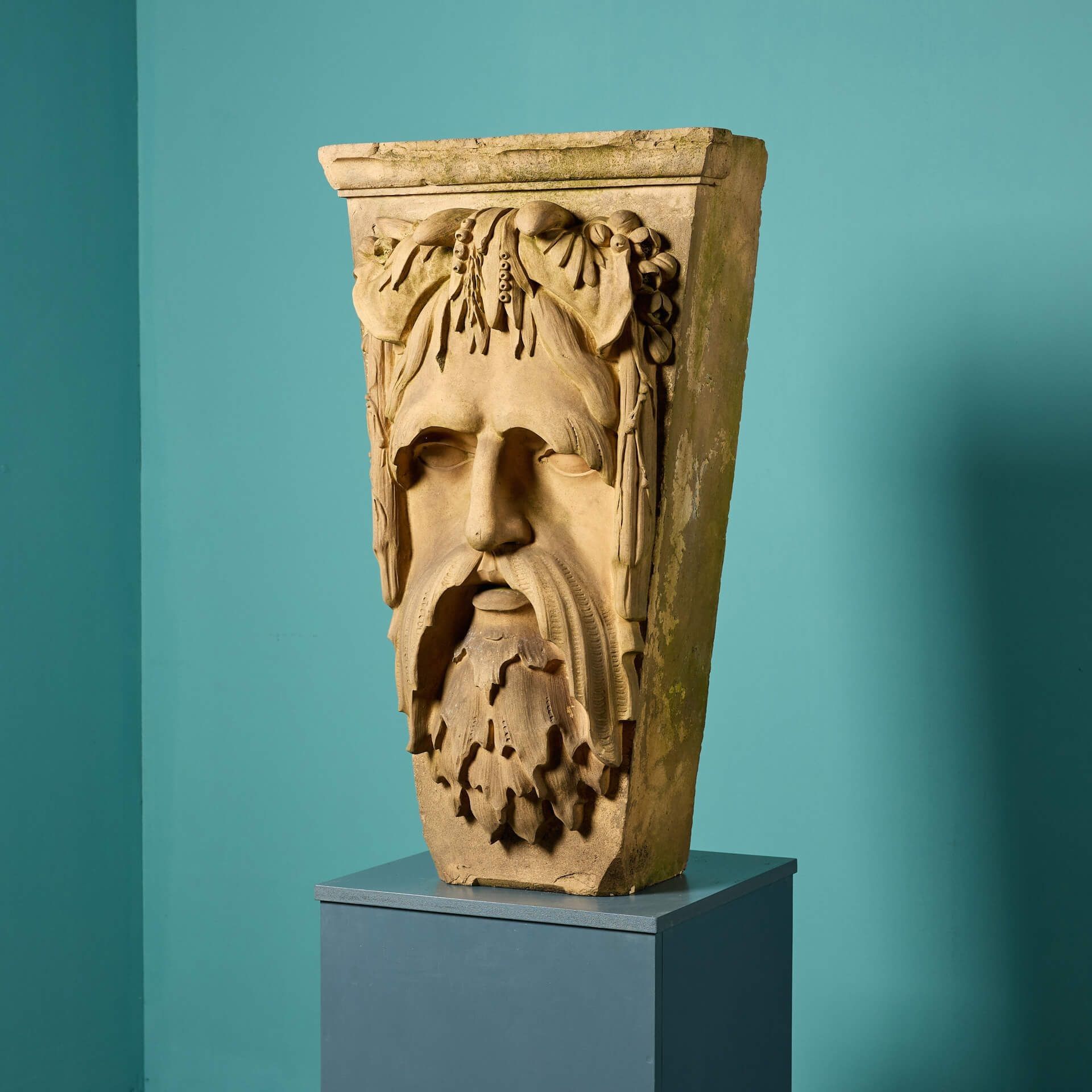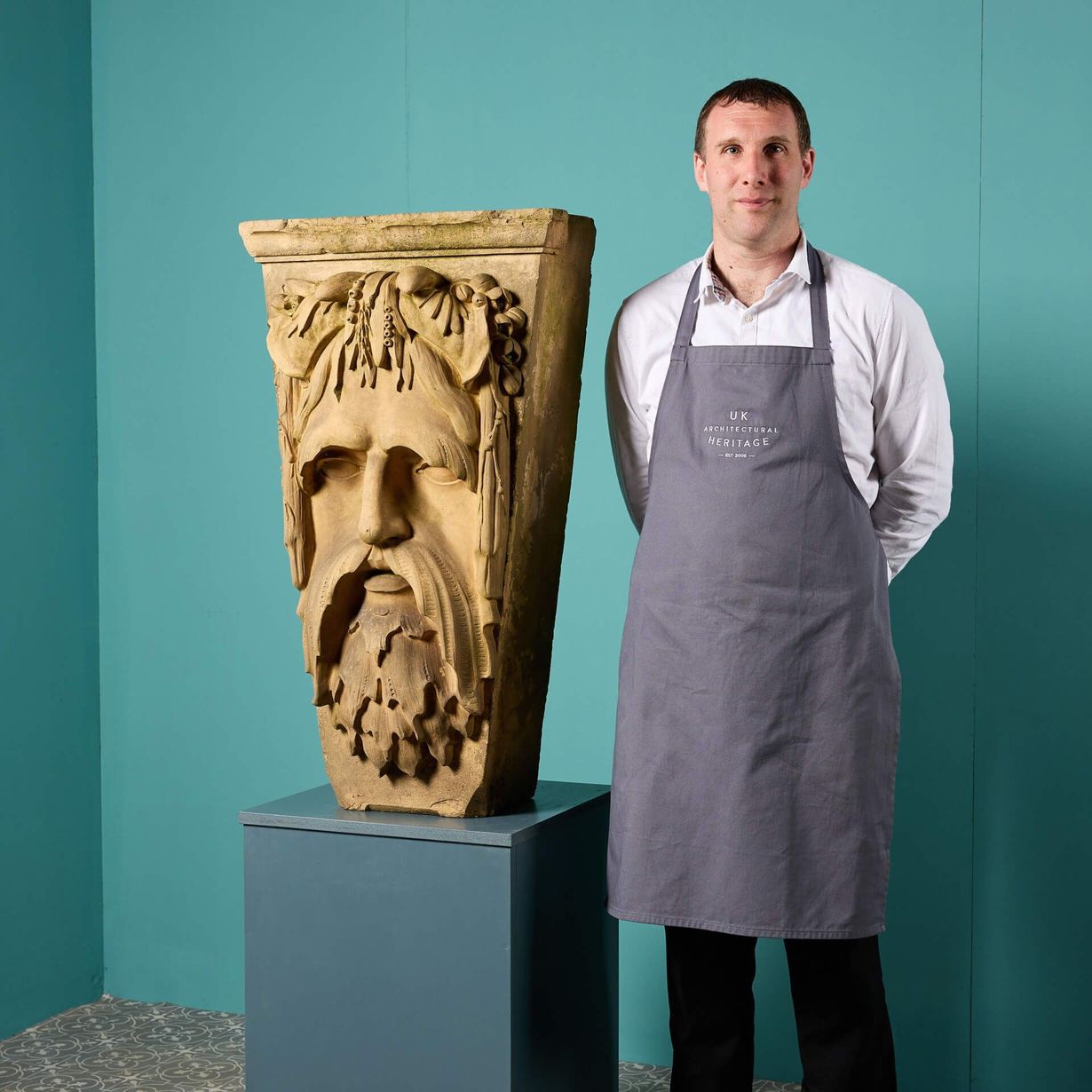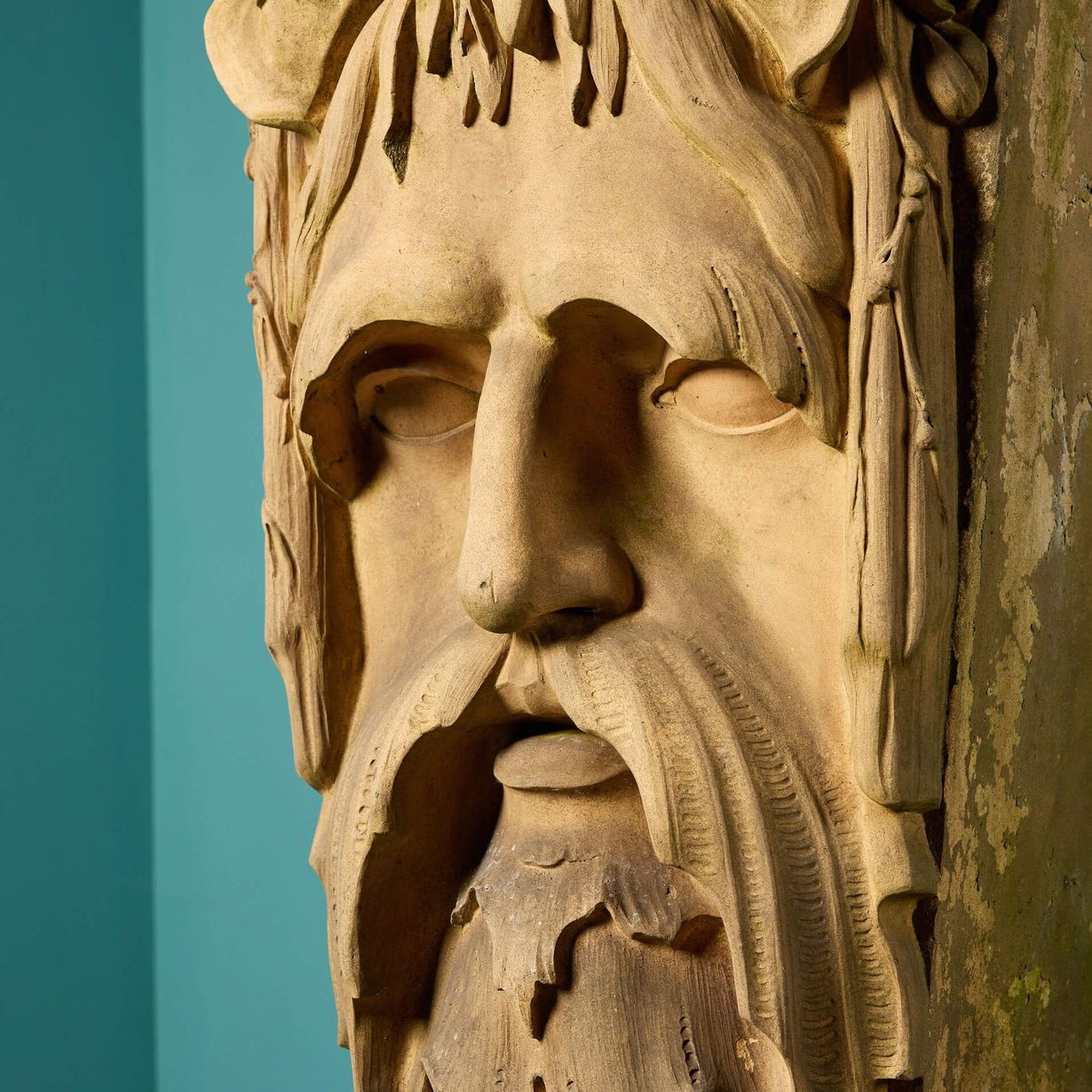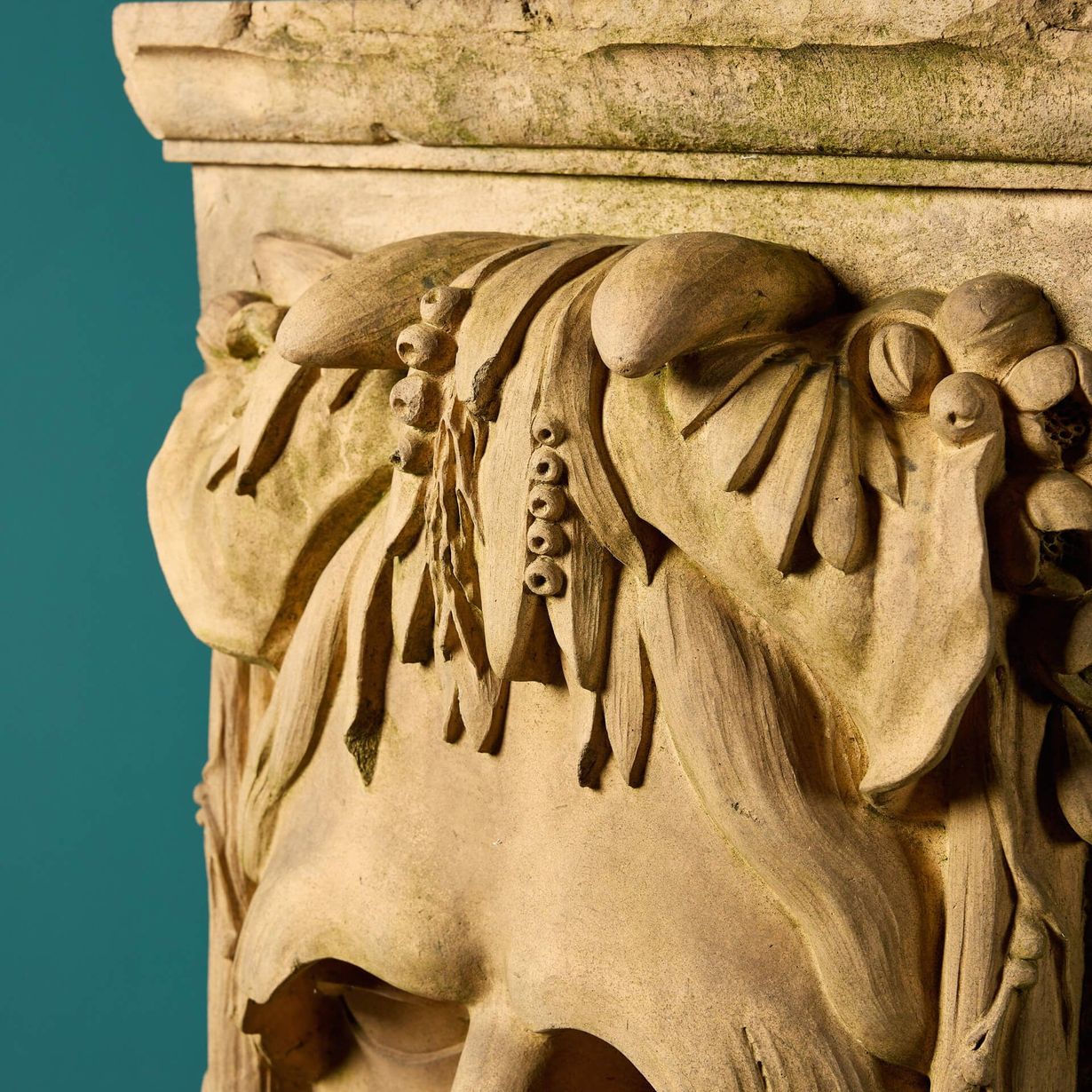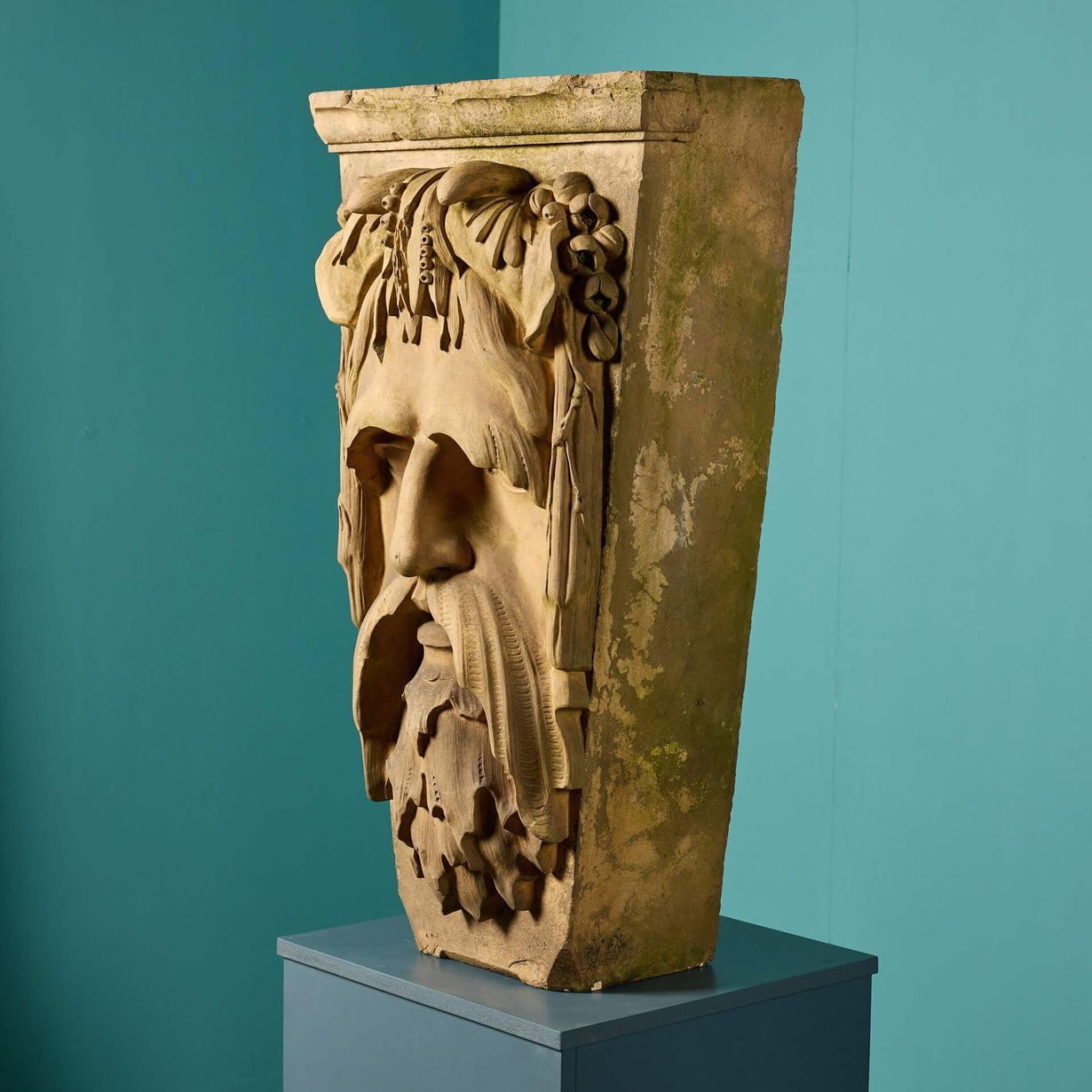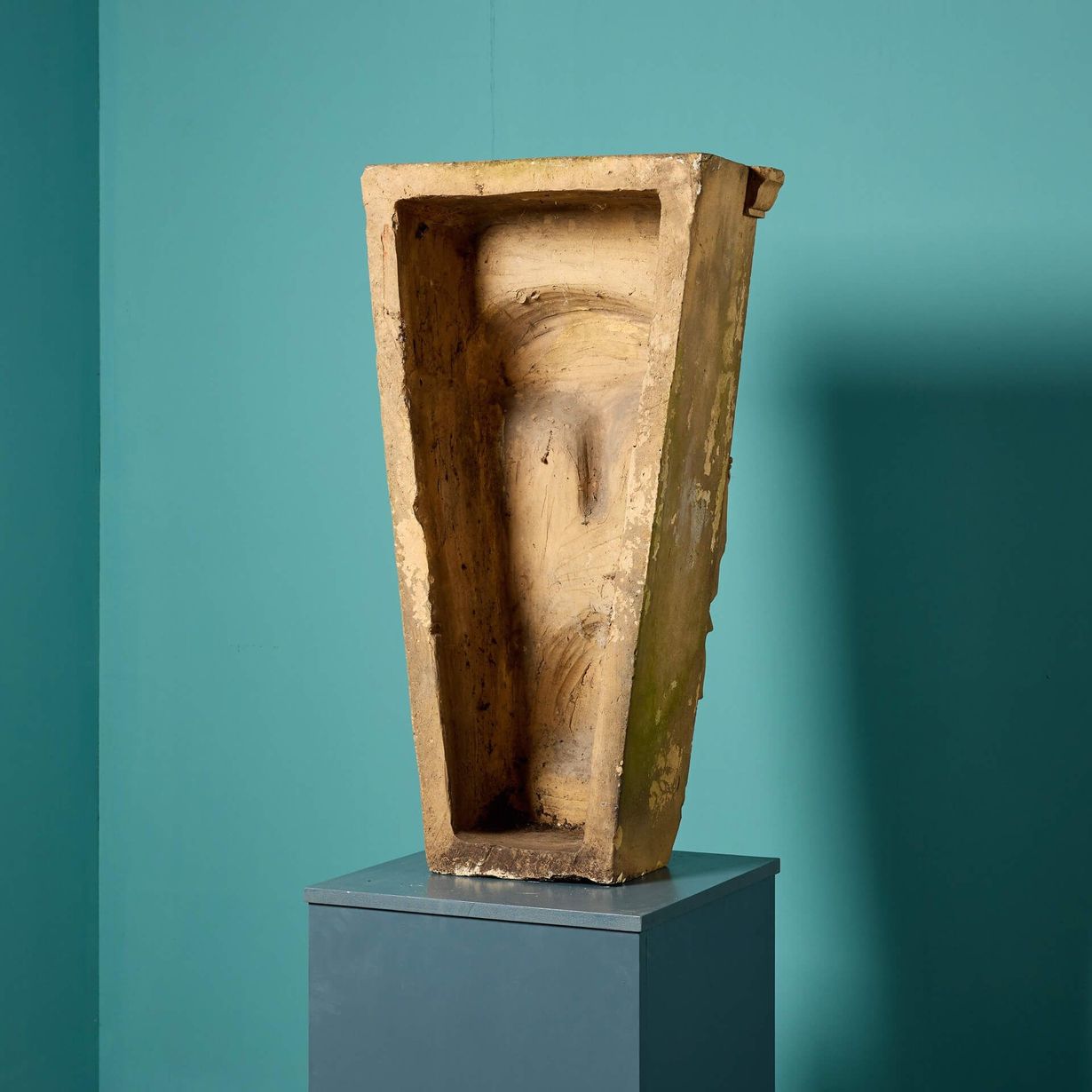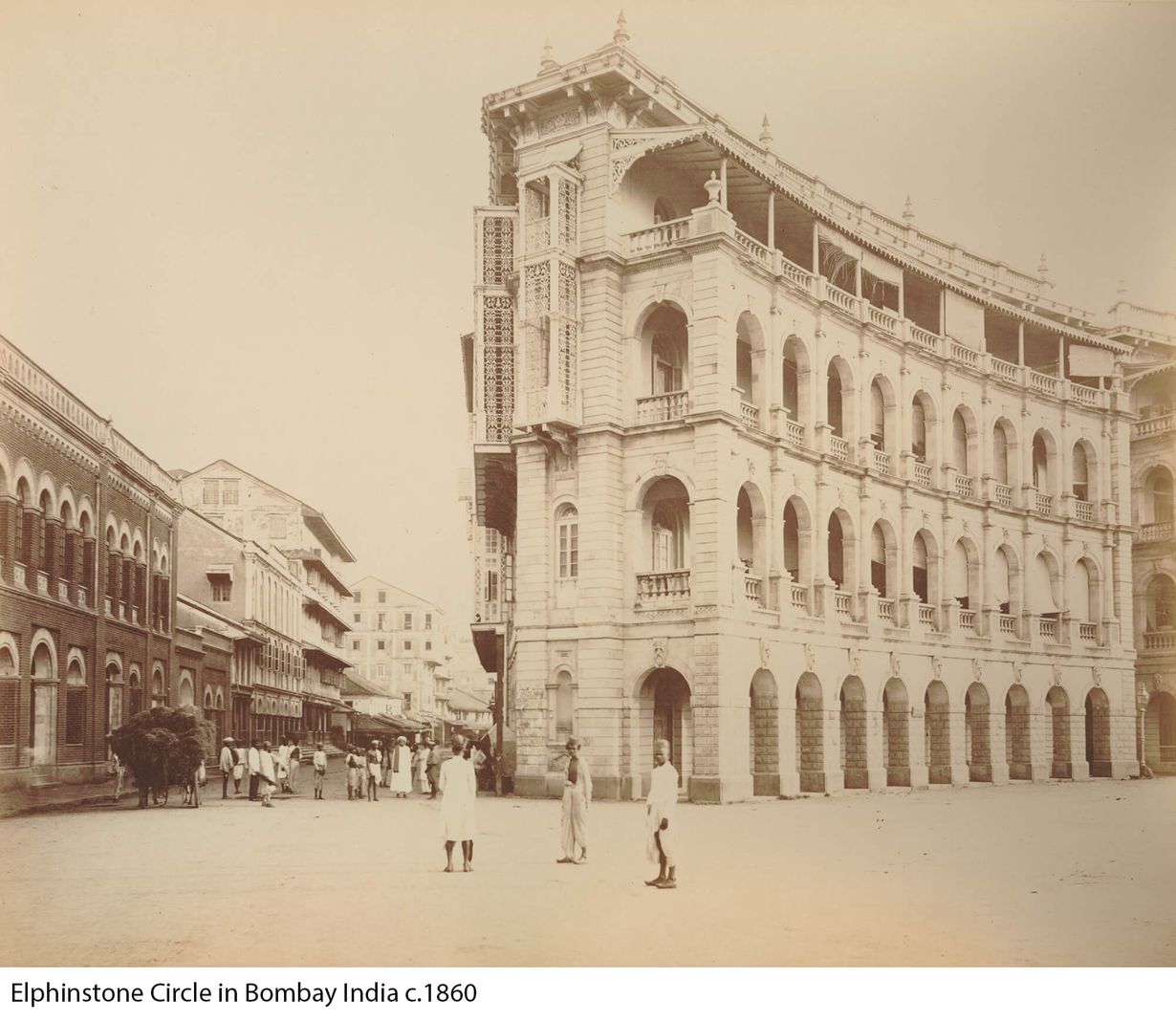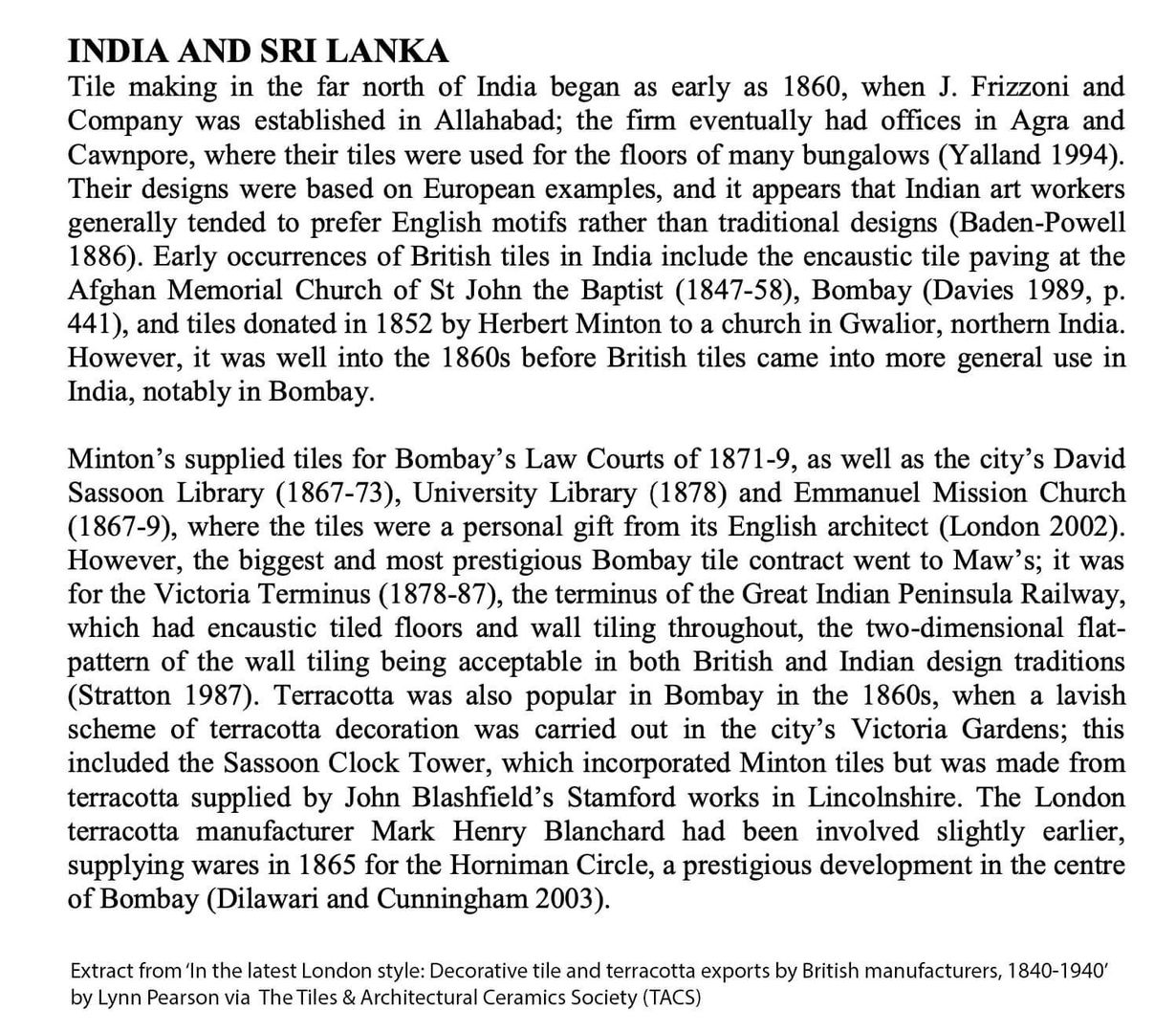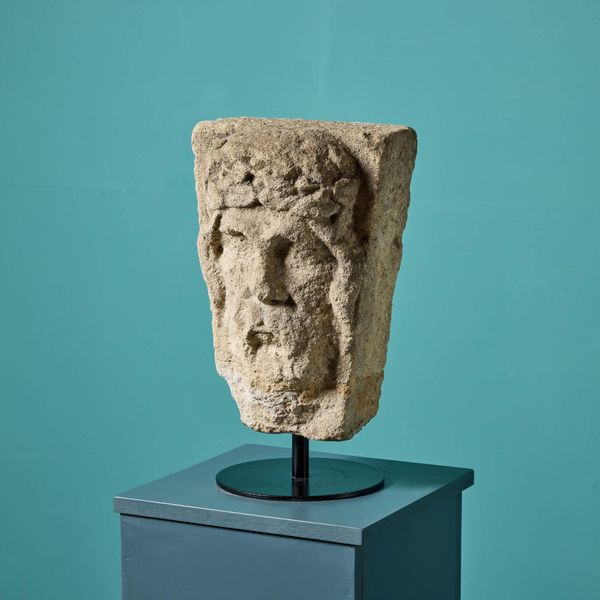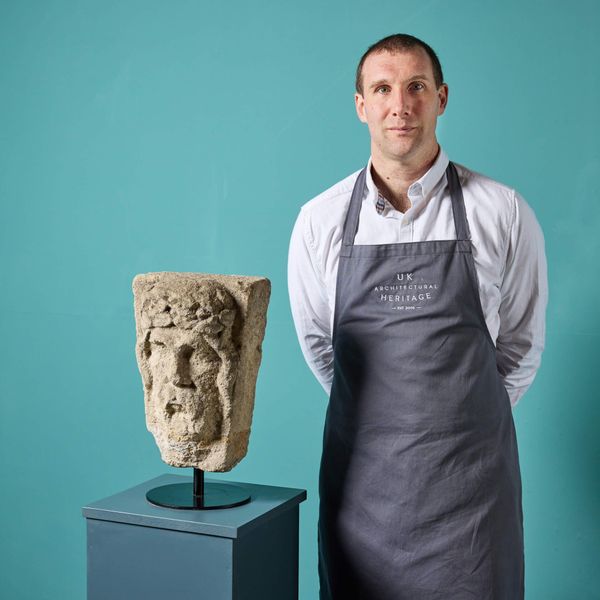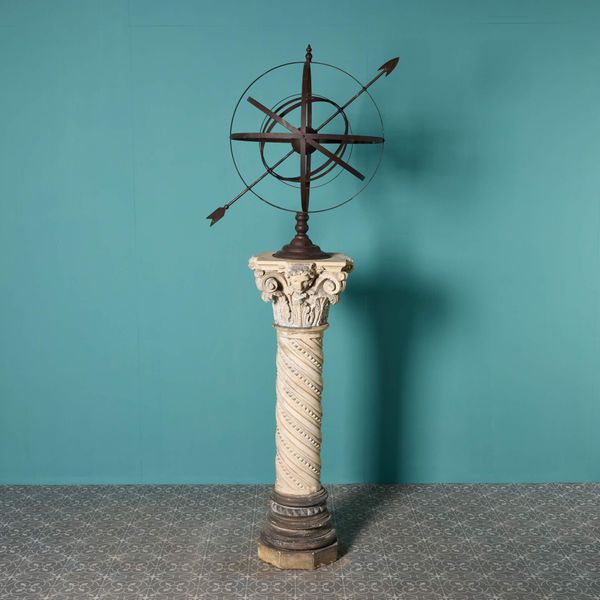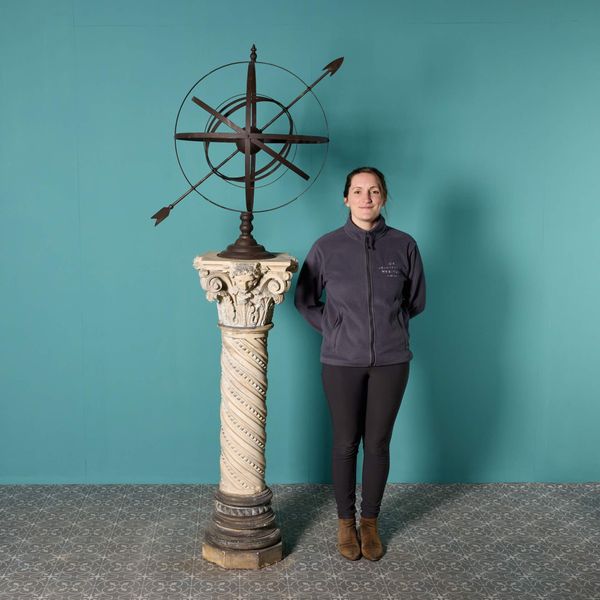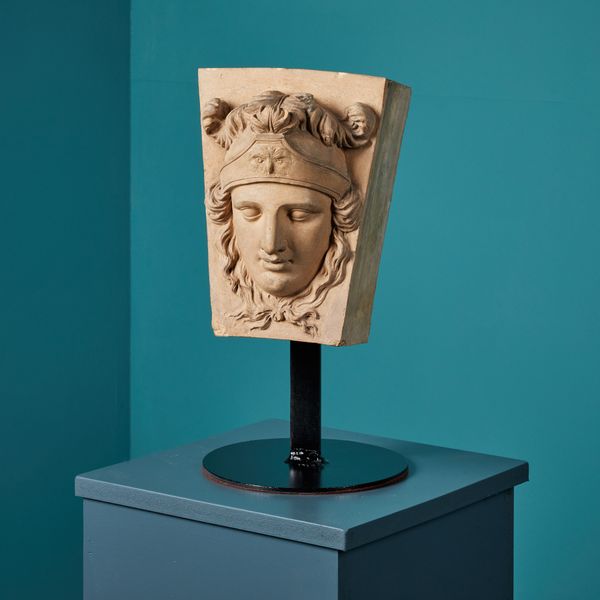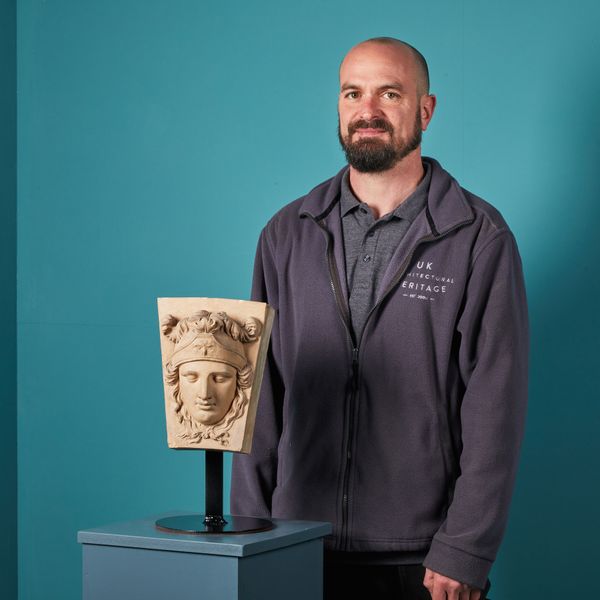About this piece
back to topA very large and unusual antique stoneware keystone attributed to Blanchard (unsigned), circa 1865.
This huge keystone stands at 3ft tall and is detailed with the mask of a heavily bearded male. With imposing, deep-set eyes, a pronounced nose and bushy eyebrows, the mask has an air of influence and greatness, the horns to the head and foliage headdress reminiscent of a mythical deity of Greek or Roman legend.
Though unsigned other than a roughly marked ‘M’ to the very top, we are attributing this to the 19th century English terracotta manufacturer, Mark Henry Blanchard, for several reasons.
Other than the colour and style appearing typical of Blanchard works, various examples of this keystone can be found in the architecture of Horniman Circle, Mumbai, India. These can be seen in a photo taken between 1850 and 1870 by Francis Frith of the Circle in Bombay that forms part of the V&A collections.
Formerly known as Bombay Green in the 18th century and later Elphinstone Circle until 1968, Horniman Circle and its gardens were designed by the British in the late 1860s and completed in 1870 during British colonial rule. Reminiscent of Bath’s Royal Crescent, the buildings were designed by James Scott, Chief Engineer of the Elphinstone Land Co, and reflect the Victorian Gothic and neoclassical architectural styles that were favoured by the British during the mid 19th century.
At this time, there is evidence to show that various wares from reputable British makers including Minton, Maw & Co and Blashfield were exported to India for architectural installations.
A historical record (pictured) by Lynn Pearson from The Tiles & Architectural Ceramics Society (TACS) details decorative tile and terracotta exports by British manufacturers during the 19th century. It states:
“Terracotta was also popular in Bombay in the 1860s, when a lavish scheme of terracotta decoration was carried out in the city’s Victoria Gardens; this included the Sassoon Clock Tower, which incorporated Minton tiles but was made from terracotta supplied by John Blashfield’s Stamford works in Lincolnshire. The London terracotta manufacturer Mark Henry Blanchard had been involved slightly earlier, supplying wares in 1865 for the Horniman Circle, a prestigious development in the centre of Bombay.”
For this reason, we are confidently attributing this keystone to Blanchard.
Additional Dimensions
Width at base: 25 cm (9.84 in)
Width at top: 53.5 cm (21.06 in)
